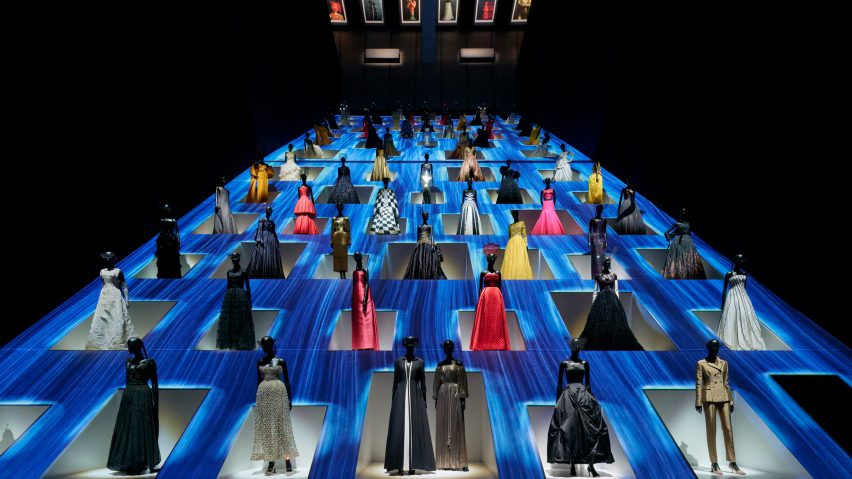
OMA creates "stage for storytelling" for Dior exhibition in Tokyo
A pyramidal staircase and delicate washi accents feature in the Christian Dior: Designer of Dreams exhibition created by Shohei Shigematsu to explore connections between the fashion house and Japan.
Held at the Museum of Contemporary Art Tokyo, the show is an extensive Dior retrospective that has previously been exhibited in London, Denver and New York.
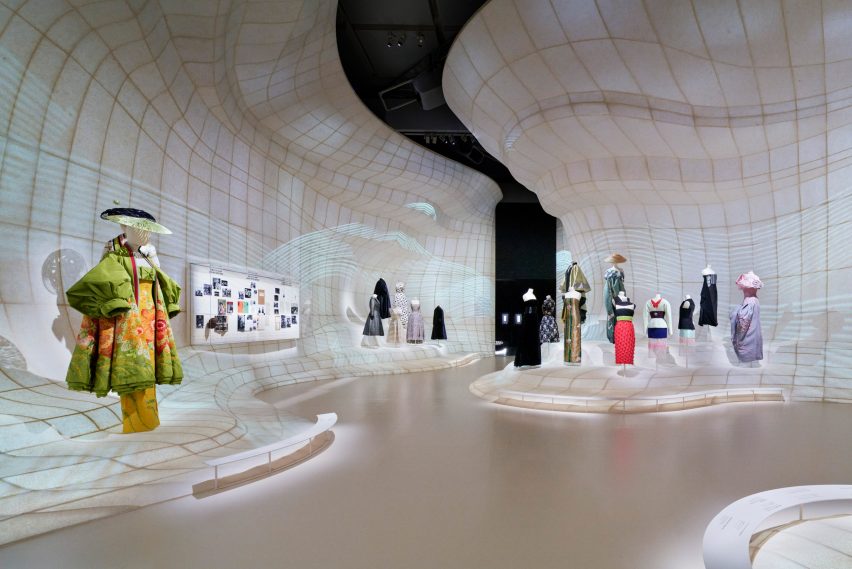
Architect Shigematsu, a partner at Dutch studio OMA, created various new sets for the Tokyo edition spread across two floors and 15 rooms within the museum.
The show intends to highlight Dior's relationship with Japanese culture over its 76-year history, including brand collaborations and garments that draw upon traditional silhouettes, according to OMA.
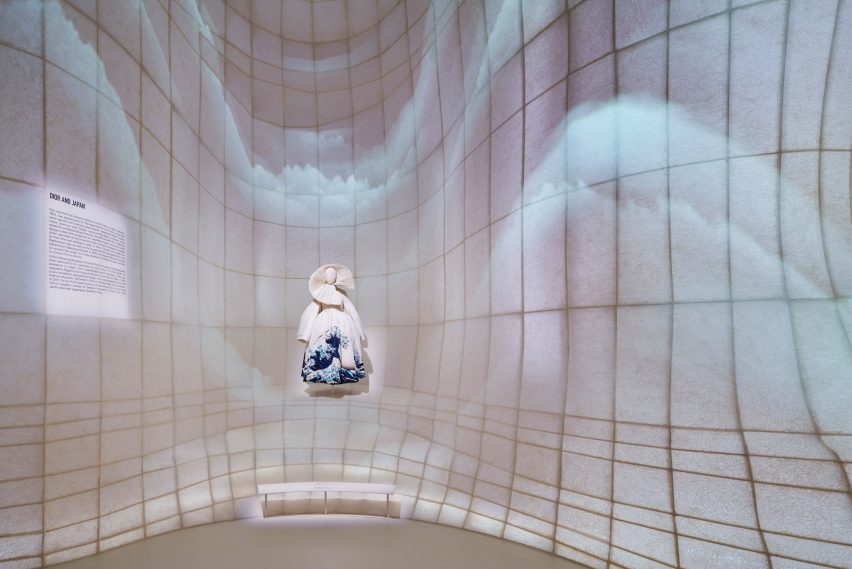
One room called Dior and Japan is characterised by a meandering floor-to-ceiling pathway constructed from wood and clad in Awagami – a type of inkjet washi paper sourced from the country's Tokushima prefecture.
Mannequins dressed in various Japan-informed Dior garments were placed atop the winding structure, which takes cues from the ethereal floats that parade through the Aomori region during the Nebuta festival.
"We wanted to create an immersive experience where visitors could also revel in discovering the House of Dior's roots and inspirations from Japan," Shigematsu told Dezeen.
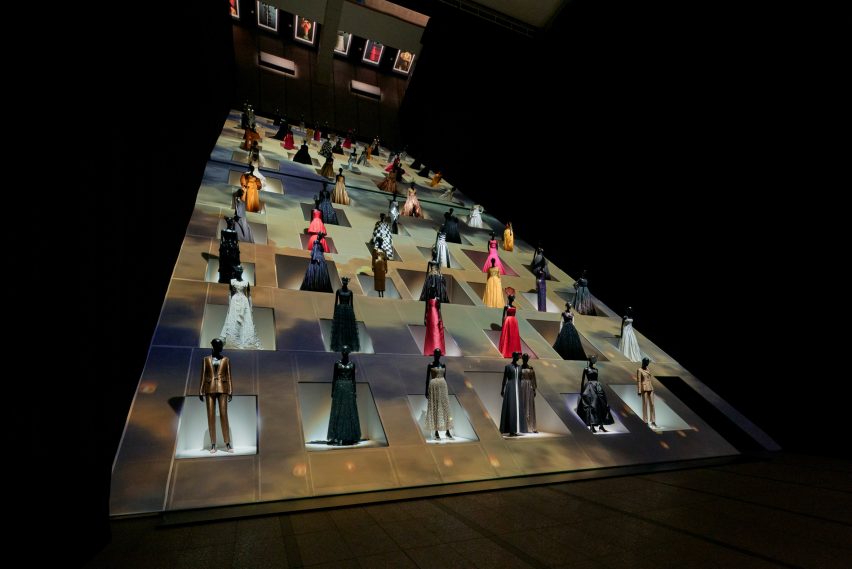
Another installation known as The Dior Ball features an oversized pyramidal staircase that takes cues from the "long, processional stairs" that lead to traditional shrines, which is amplified by a mirrored roof that reflects the structure.
Clothed in 35 pieces of Dior haute-couture, mannequins are inserted into the staircase's deep-set platforms and illuminated by changing animations.
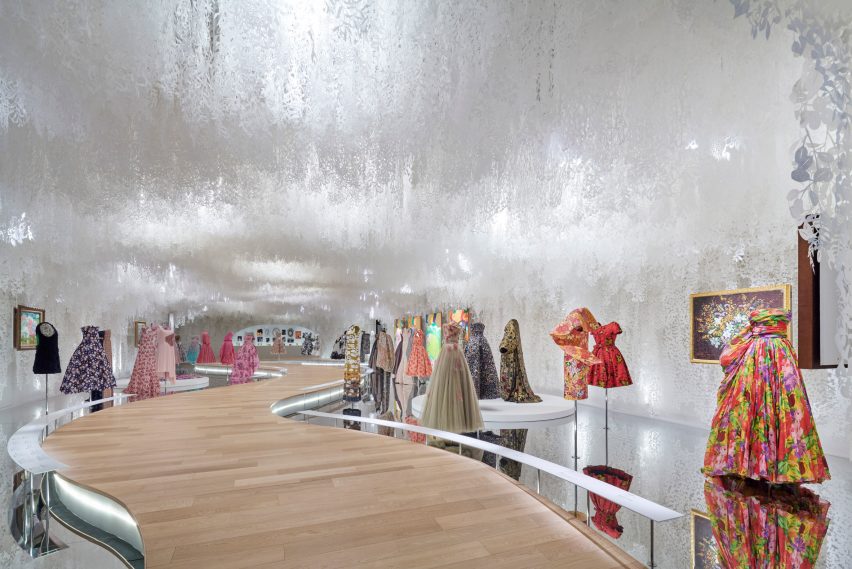
"We wanted to create a stage for storytelling that feels very tectonic and modern but grounded in the restrained and disciplined beauty authentic to Japanese culture," explained Shigematsu.
"The scenography merges Japanese traditional spaces, materials, and techniques, with very grand, contemporary shapes and architectural forms."
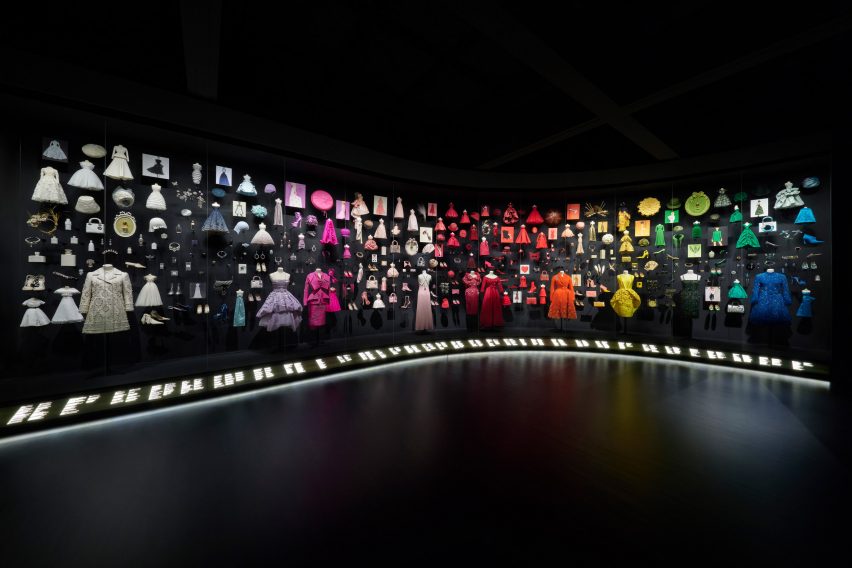
Elsewhere, Japanese Kiri-e artist Ayumi Shibata created an immersive "garden" of paper flowers as an homage to the fashion house's 1947 perfume Miss Dior and Corolle, the brand's first collection launched the same year.
Among the exhibition's many other rooms, sets from previous editions of the show have been reinstated – including a colour-coded, encyclopedia-style cluster of 359 Dior objects set against a curved wall.
Shigematsu reflected on the importance of scenography when curating a fashion exhibition.
"The fashion exhibition as a typology is relatively new but has quickly become the blockbuster shows for museums and institutions," said the architect. "That speaks to the potential of fashion to draw an extremely diverse audience, as well as its narrative potential."
"I believe a fashion exhibition is inherently a multi-faceted communication tool. It wants to reveal history, process, technique, materiality, movement and relevance to contemporary contexts – more so than say, a painting show would," he added.
"We looked at Japan through the lens of Dior and looked at the world through the lens of Japan’s history, culture, and fashion."
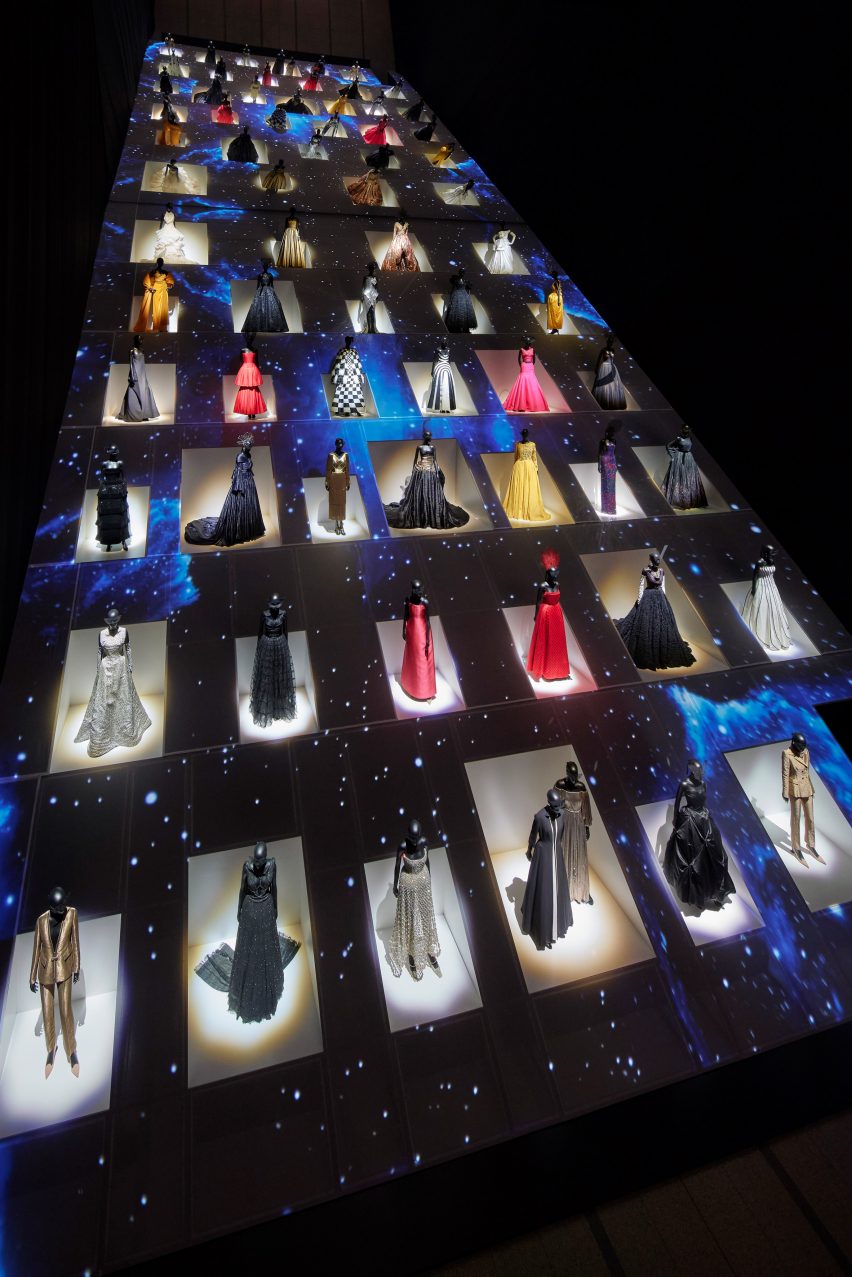
Shigematsu also created the exhibition design for the Dior retrospective when it travelled to Dallas, Texas, by using an array of colours and materials.
The photography is by Daici Ano, courtesy of Dior.
Christian Dior: Designer of Dreams is on display at the Museum of Contemporary Art Tokyo from 21 December 2022 to 28 May 2023. See Dezeen Events Guide for an up-to-date list of architecture and design events taking place around the world.